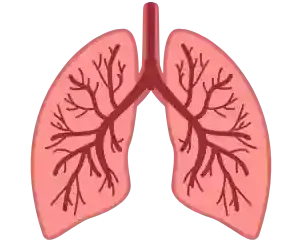Discover the Weightlifting Lungs Test, an essential tool to measure and enhance your lung capacity. Improve performance and respiratory health today!
Disclaimer: Do not use this test if you have breathing problems such as asthma and the flu. Also, if you drink alcohol or smoke in everyday life, please consult a medical professional.
Weightlifting Lungs Test
Test your lungs with this online inspection tool
Hold your breath to measure your lung capacity

Leaderboard
| # | Time (s) |
|---|---|
| 1 | 0.0 |
| 2 | 0.0 |
| 3 | 0.0 |
| 4 | 0.0 |
1. What is the Weightlifting Lungs Test?
The Weightlifting Lungs Test is a self-assessment designed to evaluate your breathing efficiency and lung performance during weightlifting exercises. It focuses on how well your lungs handle the demands of physical exertion and whether your breathing techniques align with your lifting routine.
2. Why is breathing important in weightlifting?
Breathing plays a crucial role in weightlifting as it stabilizes your core, optimizes oxygen delivery, and prevents dizziness. Proper breathing techniques can help improve performance, reduce fatigue, and enhance safety during workouts.
3. Can this test help me improve my weightlifting form?
Yes! The Weightlifting Lungs Test highlights areas where your breathing may need improvement. By identifying gaps, you can work on aligning your breathing patterns with lifting techniques, leading to better form and stability.
4. Is the Weightlifting Lungs Test suitable for beginners?
Absolutely! The test is designed to accommodate individuals of all fitness levels. Beginners can use it to establish good breathing habits early in their weightlifting journey, while seasoned lifters can use it to refine their techniques.
5. What kind of exercises are assessed in this test?
The test may include a variety of weightlifting exercises like squats, deadlifts, bench presses, and overhead lifts. These movements demand coordinated breathing to ensure optimal performance and safety.
6. Do I need any special equipment for the Weightlifting Lungs Test?
No special equipment is needed beyond what you’d typically use for your weightlifting routine, such as barbells, dumbbells, or kettlebells. The focus is on your breathing during these exercises rather than the weights themselves.
7. How often should I perform the Weightlifting Lungs Test?
It’s recommended to perform the test periodically, such as once every month or after significant changes to your training regimen. This helps track progress and identify any breathing inefficiencies.
8. Can this test replace professional guidance?
The Weightlifting Lungs Test is a self-assessment tool and should not replace guidance from fitness trainers or other professionals. For personalized advice, consult a certified fitness expert.
9. Are there any risks associated with this test?
When performed correctly, the test is safe. However, it’s essential to use proper weightlifting form and not exceed your capacity. If you feel discomfort, stop immediately and assess your technique.
10. Can this test help with endurance during weightlifting?
Yes, improving your breathing can indirectly boost your endurance. By learning to control your breath, you can maintain a steady oxygen supply, which helps sustain energy during extended sets.
11. Is the Weightlifting Lungs Test scientifically validated?
The test is based on commonly accepted principles of breathing and weightlifting. While it is not a medical test, it aligns with fitness practices to improve breathing efficiency.
12. Does the test work for cardio-focused athletes?
While the test is designed for weightlifting, cardio athletes can adapt similar breathing techniques to enhance their performance. It’s particularly useful for athletes who combine strength and endurance training.
